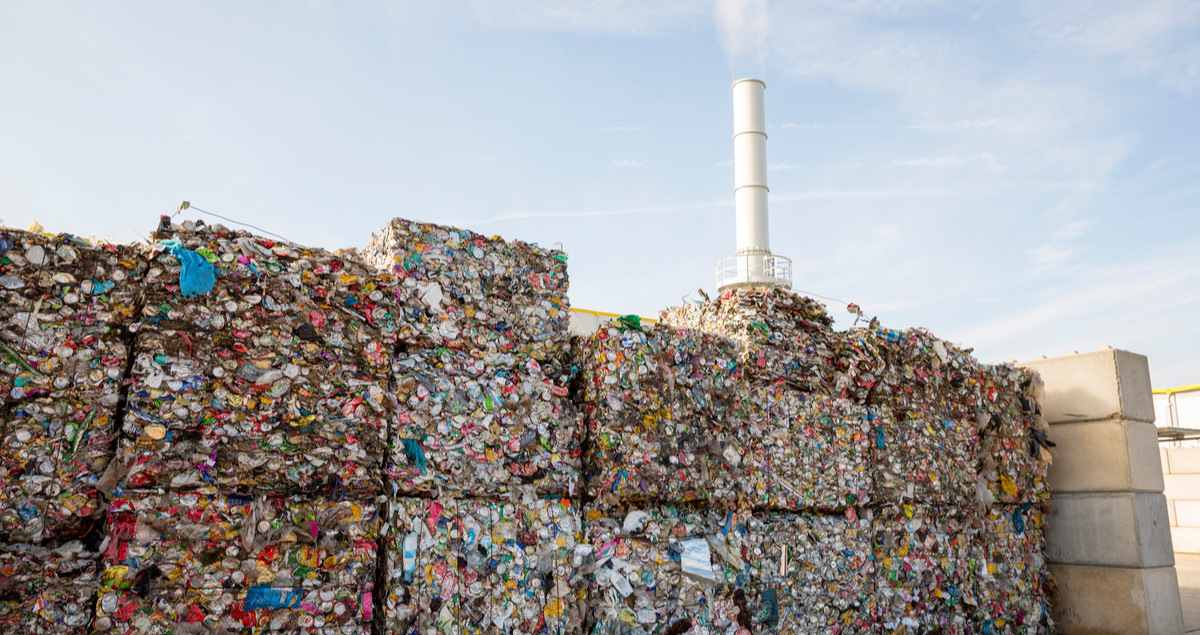How AI can help tackle the COVID-19 plastic waste mountain

Assessing the environmental impact of COVID-19 is no easy task.
On the one hand, lockdown restrictions led to record drops in global emissions and drastically changed patterns of energy demand. Research shows that daily global CO2 emissions decreased by 17% in April 2020 compared to the previous year, although pollution levels are increasing again as economies restart.
On the other hand, though, efforts to cut back on single-use plastics appear to have reversed since the virus hit. This is largely due to increased use of packaging after record rises in online shopping and deliveries, and a shift to buying take-out food instead of eating in restaurants.
Much of this waste is recyclable. But another growing source of single-use plastic is more problematic: discarded personal protective equipment (PPE). The disposable gloves, gowns, and face masks used by medical staff cannot be recycled for fear of spreading the disease.

Mounting waste
During the outbreak in China’s Hubei province, infectious medical waste increased by 600% to 240 metric tons each day, quickly overwhelming existing waste transport and disposal infrastructure. Left unchecked, this issue could similarly stretch the resources of other cities.
Some Southeast Asian cities could face up to 1,000 metric tons of additional medical waste each day, according to an Asian Development Bank survey. Recycling isn’t an option for this type of contaminated waste, which requires a sustainable and hygienic disposal method.
Much of the world’s discarded PPE finds its way into rivers and oceans, compounding the existing plastics threat to the planet’s ecosystems. If just 1% of masks are disposed of incorrectly, around 10 million masks will end up polluting the environment every month, a World Wildlife Fund report states.
Enter waste-to-energy plants: they treat waste products hygienically through incineration, then recover heat from the process, powering steam boilers and turbine systems that generate electricity.
Fuel challenges
Single-use plastic PPE is just one of the many different types of waste, ranging from everyday household rubbish to industrial refuse, that can be used as fuel in waste-to-energy plants.
A number of factors can affect the composition of waste materials and how efficiently plants can process them for energy recovery. For example, on rainy days a lot of water is absorbed on the journey through a city’s collection process, making the waste more difficult to combust.
Likewise, the increase in plastic waste from disposable PPE will also alter the burning properties of the waste.
Waste-to-energy plants treat waste products hygienically through incineration, then recover heat from the process, powering steam boilers and turbine systems that generate electricity.
Processing so many different sizes, shapes, and consistencies as fuel for incineration depends on tight control systems and close supervision by operators at the plant. Plant operators need to notice these different conditions and adjust the incineration process to keep things stable.
Doing this in the most efficient manner possible will be vital for those cities now facing increased levels of plastic waste.

AI efficiency
Artificial intelligence is being used by some waste-to-energy plant operators to optimize the efficiency of combustion and power generation, no matter the type of waste going through it.
Intelligent systems are being incorporated into waste-to-energy plant operations by Mitsubishi Heavy Industries Environmental & Chemical Engineering Company (MHIEC), a part of MHI Group, which uses AI- and Internet of Things (IoT)-connected sensors to analyze operators’ knowledge, optimize operations, and keep things running smoothly.
Cameras are used to monitor combustion inside the furnace. These images are analyzed by AI to predict the amount of steam the waste will generate; waste and air levels in the furnace can then be controlled accordingly to keep the incinerator running at its most efficient level.
This automatic tuning of the incinerator ensures the maximum amount of energy is recovered from each piece of waste. For processing items like PPE and all the additional packaging that cannot be recycled, it is the most sustainable method cities have available to them for tackling the COVID-19 plastic waste mountain.





